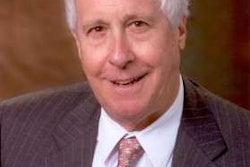A new roadside survey by the National Highway Traffic Safety Administration confirms a continuing decline in the percentage of legally intoxicated drivers, the U.S. Department of Transportation announced Monday, July 13.
In 1973, 7.5 percent of drivers had a blood alcohol concentration (BAC) of .08 or higher. In the latest survey, that figure had fallen to 2.2 percent. A BAC of .08 or higher now is above the legal limit in all 50 states and the District of Columbia.
Previous roadside surveys conducted by NHTSA have measured only alcohol, but the 2007 survey used new screening techniques that detected other substances as well and in the future may help show the extent of drug impairment among drivers.
The survey found 16.3 percent of nighttime weekend drivers were drug-positive. The survey focused on weekend nighttime drivers and found that the drugs used most commonly by drivers were marijuana (8.6 percent), cocaine (3.9 percent) and over-the-counter and prescription drugs (3.9 percent).
U.S. Transportation Secretary Ray LaHood says he is concerned about the prevalence of drivers who use drugs. “I’m pleased to see that our battle against drunk driving is succeeding,” LaHood says. “However, alcohol still kills 13,000 people a year on our roads, and we must continue to be vigilant in our efforts to prevent drunk driving.”
“This troubling data shows us, for the first time, the scope of drugged driving in America, and reinforces the need to reduce drug abuse,” says Gil Kerlikowske, director of the Office of National Drug Control Policy. “Drugged driving, like drunk driving, is a matter of public safety and health. It puts us all at risk and must be prevented.”
NHTSA is conducting further research to assess how drug traces correspond to driver impairment since some drugs can remain in the body for days or even weeks. Should further research indicate that drugs pose the same type of traffic safety risk as alcohol, NHTSA is committed to applying lessons learned in fighting the drunk driving problem.
Among the findings of the latest roadside survey are these:
The 2007 survey involved more than 300 roadside locations throughout the United States. To view the survey, click here.











